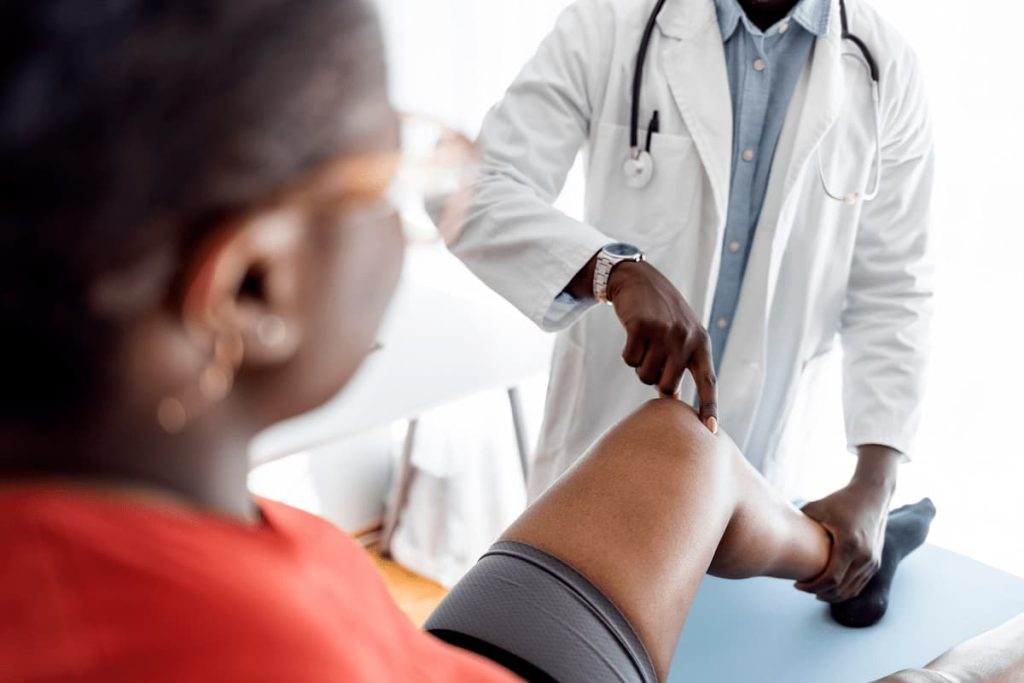Complex Regional Pain Syndrome can be extremely painful and debilitating, making it difficult or impossible for sufferers to return to work.
If you’ve been struggling with ongoing pain after a workplace injury, you may be wondering what’s going on and if there’s anything that can be done about it. Unfortunately, you could be suffering from a condition called complex regional pain syndrome (CRPS).
What exactly is CRPS, and what are the symptoms and treatment options?

Complex Regional Pain Syndrome (CRPS)
Complex regional pain syndrome (CRPS) is a chronic pain condition that most often affects the hands, feet, arms, or legs. It is thought to be caused by damage to the nervous system after an injury. Some of the workplace injuries that can result in CRPS include:
- Burns
- Fractures
- Sprains/strains
CRPS can be extremely painful and debilitating, making it difficult or impossible for sufferers to return to work. The pain is often described as a burning or “pins and needles” sensation and can be so severe that even the lightest touch is unbearable.
Symptoms of CRPS
CRPS symptoms can vary from person to person, but common symptoms include:
- Sensitivity to touch or temperature changes
- Ongoing pain that is out of proportion to the initial injury
- Joint stiffness and swelling
- Changes in skin color and texture
- Muscle weakness
- Abnormal sweating
- Changes in nail and hair growth
If you’re experiencing any of these symptoms after a workplace injury, it’s important to see a doctor as soon as possible. Early diagnosis and treatment are essential for managing the condition.
Treating CRPS
There is no one-size-fits-all treatment for CRPS, as the condition affects everyone differently. However, there are a few common treatment options that can help manage the pain and other symptoms. These include:
Pain Medication: Opioids may be prescribed for severe pain; however, they come with a risk of addiction and should only be used as a short-term solution. Other pain medications, such as antidepressants and anticonvulsants, may also be prescribed.
Physical Therapy: Physical therapy can help stretch and strengthen the muscles and joints, improving range of motion and function.
Occupational Therapy: Occupational therapy can help you learn new ways to perform everyday tasks that are now difficult due to your condition.
Psychological Counseling: Psychological counseling can help you deal with the pain and other emotional challenges of living with CRPS.
Spinal Cord Stimulation: Spinal cord stimulation is a surgical procedure that involves the implantation of a device that sends electrical signals to the spinal cord, which can help block pain signals.
Sympathetic Nerve Block: A sympathetic nerve block is a procedure that involves the injection of medication into the sympathetic nervous system, which may help relieve pain.
Can I Be Compensated For CRPS?
If a workplace injury caused your CRPS, you might be eligible for workers’ compensation benefits. Some of the benefits you can get include medical expenses and lost wages.
However, to be eligible for workers’ compensation, you need to prove that your job caused your CRPS. This can be done with medical records, witness statements, and other evidence. An experienced workers’ compensation lawyer can help you gather the evidence you need to get the benefits you deserve.
Missouri Work Injury Lawyer
If you’ve been injured at work and are suffering from CRPS, the Law Office of James. M. Hoffman can help. We have over 30 years of experience representing injured workers in Missouri, and we know what it takes to get the benefits you deserve. Contact us today for a free consultation.
Get FREE Legal Advice
Call today to speak with an experienced Missouri workers compensation attorney!
Call (816) 399-3706